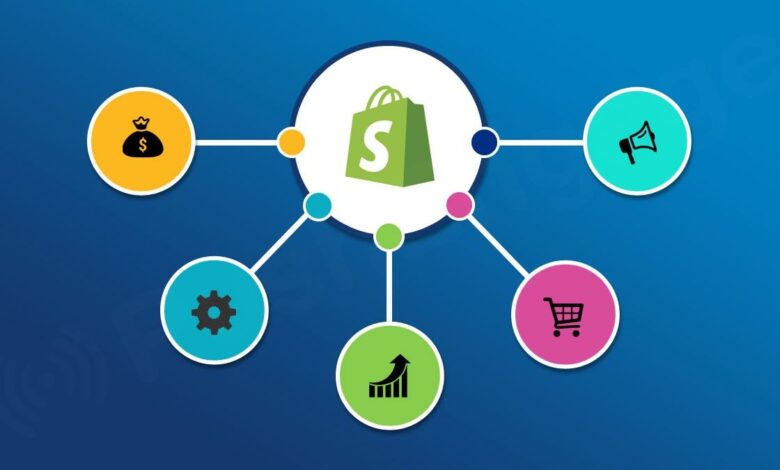Shopify Store Performance Optimization Speed Equals Sales

1. Introduction
In today’s digital-first world, customers expect instant gratification. That includes fast-loading websites—especially in e-commerce. A delay of even a single second can cause a dramatic drop in conversions. For Shopify store owners, site speed isn’t just a nice-to-have—it’s a sales accelerator.
This blog unpacks the crucial relationship between performance and revenue while providing a comprehensive guide to optimizing your Shopify store’s speed. By leveraging top-tier Shopify development services, businesses can ensure they remain competitive and customer-centric.
2. The Impact of Page Load Time on Conversions
Page speed directly influences user experience. Studies show that 53% of mobile users abandon a site that takes longer than 3 seconds to load. That’s a staggering figure—and one that can heavily affect your bottom line.
Shopify stores that load quickly see lower bounce rates, higher engagement, and significantly better conversion rates. Investing in performance optimization isn’t optional; it’s foundational to success in e-commerce.
3. Diagnosing Performance Bottlenecks
Before you can optimize, you need to know where your store stands. Use tools like Google PageSpeed Insights, GTmetrix, and Shopify’s native speed report to identify issues.
Common culprits include unoptimized images, unused code, excessive apps, and heavy JavaScript. By pinpointing specific bottlenecks, you can take targeted action that results in meaningful speed improvements.
4. Theme Optimization: Lightweight Wins
Your Shopify theme sets the tone—and the speed—for your entire store. Choose lightweight, well-coded themes that prioritize performance without compromising aesthetics.
If you’re already using a theme, review its code. Remove unnecessary animations, preload fonts, and minimize external calls. Shopify development services can help customize themes to improve load times without breaking your brand identity.
5. Image Optimization: Size Isn’t Everything
High-resolution images look great—but they can seriously slow down your store. Compress images using tools like TinyPNG or Shopify’s built-in image compression. Stick to recommended formats like WebP for faster loading.
Additionally, implement lazy loading so images load only when they enter the user’s viewport. This small tweak can drastically reduce initial load times and improve perceived speed.
6. App Management: Less Is More
Shopify’s app ecosystem is incredibly powerful—but using too many apps can slow your site. Every app adds weight to your code, increasing load time and affecting your store’s performance.
Audit your installed apps regularly. Remove unused or redundant ones. If needed, consider hiring Shopify development services to consolidate multiple app functionalities into a single, efficient custom solution.
7. Optimize JavaScript and CSS Delivery
Scripts and stylesheets are necessary but can create delays if not managed properly. Minify JavaScript and CSS files to reduce file size. Defer or async non-critical JavaScript to prevent render-blocking.
You can also inline critical CSS to ensure above-the-fold content loads instantly. Shopify development services often include custom scripting solutions to streamline your store’s backend and frontend performance.
8. Use a Content Delivery Network (CDN)
A CDN distributes your content across multiple servers around the globe, so users load your site from the server closest to them. This reduces latency and increases loading speed across different regions.
Shopify comes with a built-in CDN through Fastly, but optimizing its use—or integrating additional CDN strategies—can offer improved performance, especially for international stores.
9. Mobile Optimization Think Small, Perform Big
With mobile traffic now accounting for over 70% of e-commerce visits, mobile performance can’t be ignored. Ensure your store is responsive and that mobile-specific loading speeds are fast.
Avoid bulky elements that load poorly on mobile and test your store regularly using mobile emulation tools. Shopify development services can implement mobile-first enhancements that streamline mobile UX and boost engagement.
Conclusion
In the world of e-commerce, speed truly equals sales. A fast, responsive Shopify store not only enhances user experience but also strengthens your SEO, boosts conversions, and fosters greater customer loyalty.
By investing in ongoing performance optimization and partnering with a professional Shopify development services provider, you’re not just accelerating load times—you’re laying the foundation for long-term growth and digital success. Speed isn’t a luxury anymore—it’s your secret weapon in a competitive online market role of artificial intelligence in compliance in 2025 ensuring policy adherence, and minimizing risks across e-commerce platforms in 2025. Integrating AI-driven compliance tools with your Shopify store will help businesses stay agile, secure, and regulation-ready.



